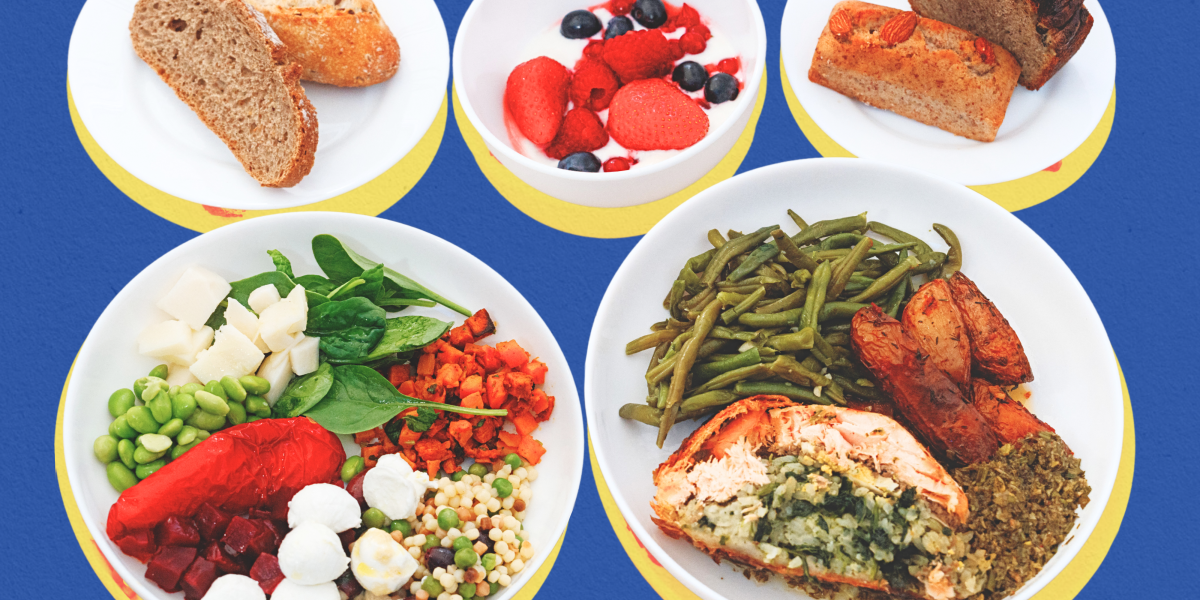They’re also looking local: About 80% of the products consumed (including all beef and eggs) will be of French origin, with one-fourth coming from within about 155 miles of Paris. And, organizers aim to halve the weight of single-use plastics throughout Olympic catering facilities, meaning more reusable glass bottles and tableware, fewer and smaller plastic bottles, and a push to recycle and compost when possible.
And of course, there will be bread. Lots of bread.
France doesn’t skimp on carbs, so the Village will be no different. Paris is known for its boulangeries and pâtisseries, and athletes will get to taste it all. An on-site bakery will turn out fresh baguettes and even offer workshops for athletes, where they’ll shape and bake their own long, thin loaves.
Team USA will travel with a team of dietitians.
If all those options are making your head swarm, you’re not alone: First-time Olympians often find the size and variety of the dining hall overwhelming, Alicia Glass, senior sports dietitian for the USOPC, tells SELF. As they prepare for what might be their biggest-ever event, they want food that meets their nutritional needs, doesn’t cause gastrointestinal distress, and makes them feel comfortable, confident, and ready to perform at their best.
That’s where the dozen-plus USOPC dietitians come in, with each team assigned at least one. For example, Glass works with swimmers at the beginning of the meet, and track and field athletes later in the competition. “One of the biggest things our job focuses on is creating a home-field advantage, which is hard when you’re in an international country,” Glass says.
To get there, she provides personalized nutrition advice to athletes throughout the year, if they want it. She also coordinated with Knutson and his team to get familiar foods like protein bars, peanut butter, and fruit snacks shipped from the US to France. (They placed orders around Christmastime to make sure the shelf-stable foods could clear customs.)
On the ground in Paris, she plans to walk athletes through the dining hall, helping them find choices that align with what they eat at home. She’ll scope out menus and ingredient lists, ensuring they get the nutrients they need and avoid allergens. And she’ll give them tips on locating water stations and coffee in the Village, as well as help them think through the logistics—for instance, if they’ll actually have time to wait in line for a latte before catching a bus to their training facility or competition venue.
This year, she’ll have some high-tech help, through an app called Teamworks Nutrition. Athletes can use the app to track what they’re eating during the Games, making sure they’re getting all the macronutrients (protein, carbs, and fat) and micronutrients (such anti-inflammatory polyphenols and vitamin C found in fruits and vegetables). If they want a dietitian’s opinion, Glass and her colleagues can check the app and make recommendations; they can also use the app to order meals for delivery or other special requests.
And Team USA athletes will enjoy a whole separate dining hall just for them.
American athletes also have the option of eating meals at the High Performance Center, a one-stop shop that houses another 250-seat dining hall, in addition to sports medicine and mental health practitioners and hot and cold plunge pools and cryotherapy chambers. It’s open 7 a.m. to 8 p.m. and will be well-stocked with familiar items, says Knutson, who estimates they’ll serve about 25,000 meals to Team USA Olympians, Paralympians, coaches, and staffers.
